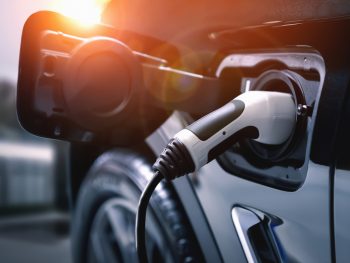UK new car registrations up 4.6% on strong EV and fleet market growth
The UK new car market rose for the second month running in September, bolstered by significant growth in the fleet sector and continued strong EV demand.

Britain’s millionth plug-in electric car was registered in September
Registrations in the key ‘new plate’ month hit a total of 225,269 cars – up by 4.6%. The new SMMT data also shows registrations by large fleets bucked recent trends and grew by 12.5% to 101,760 units, while demand from private buyers fell by 3.6%. ‘Business’ registrations to companies with fewer than 25 vehicles were particularly buoyant – they soared by 70.5% to 7,344 units.
It was also a bumper month for plug-in registrations – with Britain’s millionth plug-in electric car registered and the second highest monthly volume of battery electric vehicle (BEV) registrations in history, up 16.5% to 38,116 units. The strong growth helped counter a 11.5% YoY drop-off in plug-in hybrid registrations and means that overall plug-in vehicles accounted for more than one in five new cars (22.4%) joining UK roads in the month.
Hybrid electric vehicle (HEV) registrations grew by 16.5% to 29,088 units in the month, while petrol-powered cars were up 4.3% to 126,873 units and diesels declined by 14.5% to 18,911.
There were some notes of caution though. While fleet registrations were up year-on-year, they’re still down by 39.7% on pre-pandemic volumes.
And total registrations for 2022 so far remain 8.2% down – even when compared to a weak 2021 performance – and more than a third (35.1%) below the first three-quarters of pre-pandemic 2019, equivalent to 653,903 fewer units
The SMMT noted that supply chain issues continue to constrain model availability and called for action to shore up consumer confidence as the market enters the final quarter.
Mike Hawes, chief executive, said: “Whilst the industry is working hard to address these issues, the long-term recovery of the market also depends on robust consumer confidence and economic stability.”
He also highlighted that while electric vehicle uptake continued to rise, it was at a slower rate of growth than seen earlier in the year.
Hawes continued: “Battery electric vehicles make up but a small fraction of cars on the road, so we need to ensure every lever is pulled to encourage motorists to make the shift if our green goals are to be met.”
Meryem Brassington, electrification propositions lead at Lex Autolease, said the new car registration figures were a strong indicator that the new car market is slowly showing signs of recovery amid inflationary pressures and global supply chain challenges.
“What remains impressive is the continued growth of battery electric vehicles, with the market well on track to surpass last year’s overall registrations,” she added. “Businesses and private drivers are embracing the transition to electric and reaping the many environmental and cost-saving benefits it offers.
“Yet, significant challenges lie ahead. EV drivers face a hike in charging costs and further clarity is needed on company car tax tables beyond 2025 to give fleet managers the confidence they need to make long-term purchasing decisions. All eyes will be on the Government in the months ahead to ensure that the goodwill and progress made along the road to zero already this year doesn’t start to stall.”
And Novuna Vehicle Solutions said that the much-welcome BEV boom raises big questions about the UK’s charging infrastructure.
Jon Lawes, managing director, commented: “The ratio of electric cars to public charge points has risen from 5:1 in 2019, to 15:1 today, and unless we see some meaningful progress on the Government’s EV infrastructure strategy, and soon, we could be facing a ratio closer to 54:1 by the end of this decade. If queues for cars become queues for chargers, it could throw a stick into the spokes of the growth plan we have been hearing so much about this week.”
The ratio of electric cars to public charge points has risen from 5:1 in 2019, to 15:1 today, and unless we see some meaningful progress on the Government’s EV infrastructure strategy, and soon, we could be facing a ratio closer to 54:1 by the end of this decade. If queues for cars become queues for chargers, it could throw a stick into the spokes of the growth plan we have been hearing so much about this week.”












